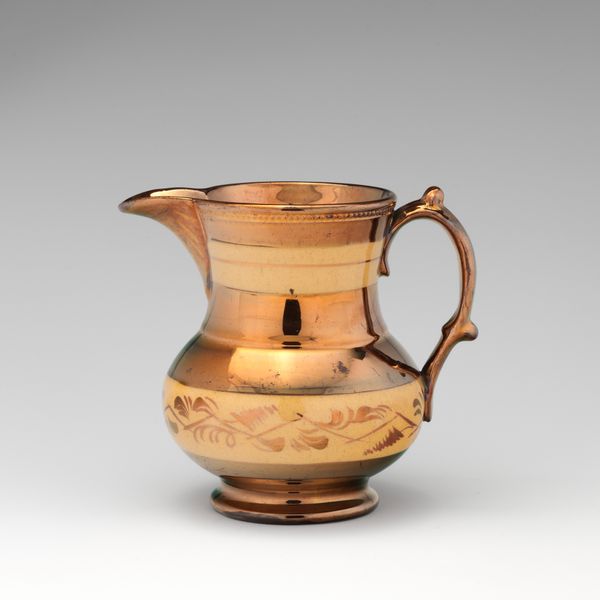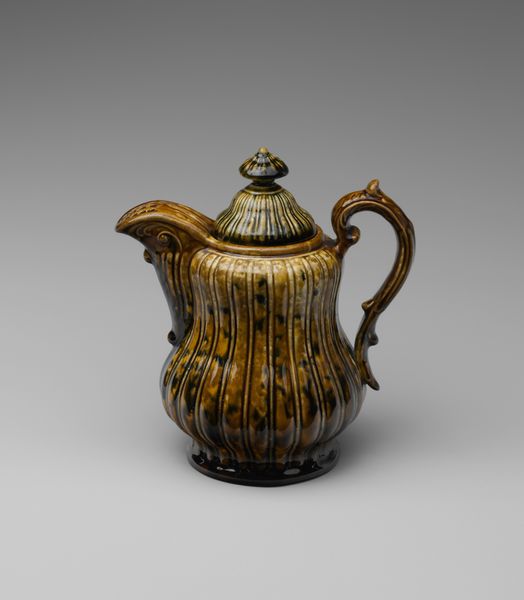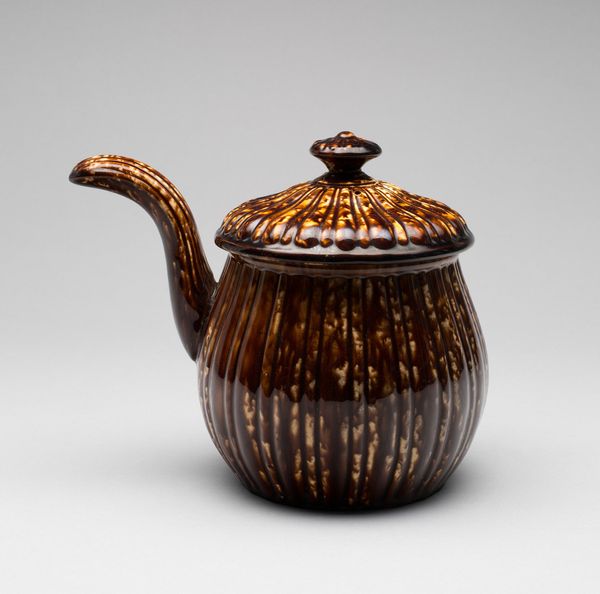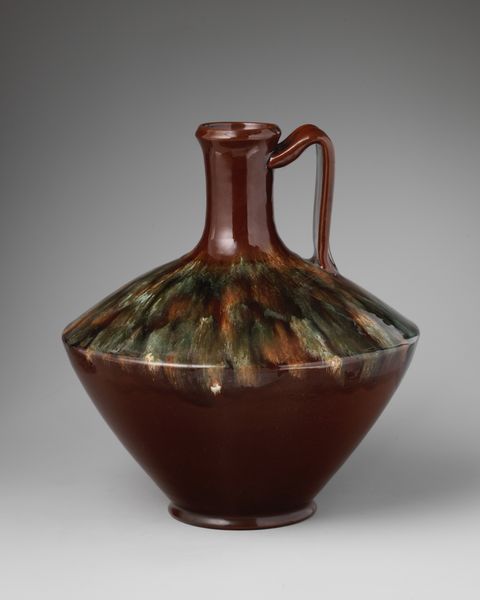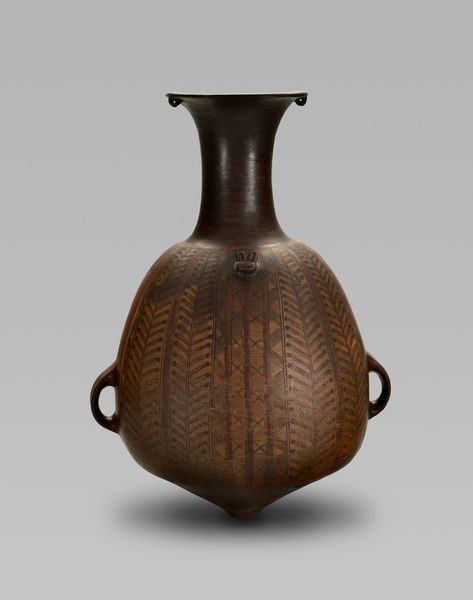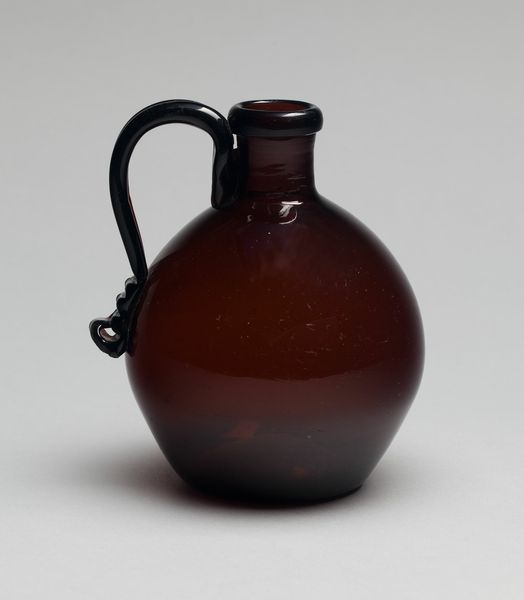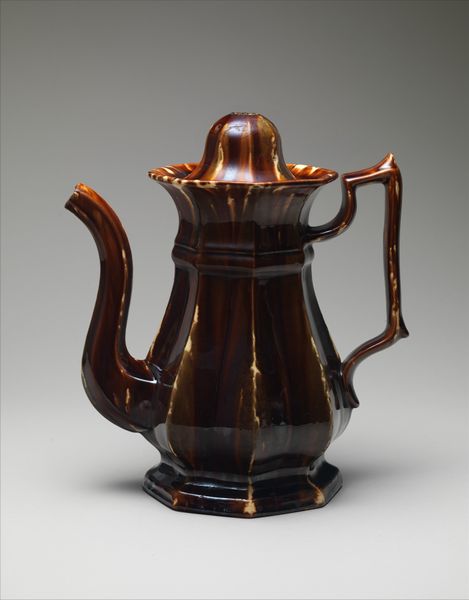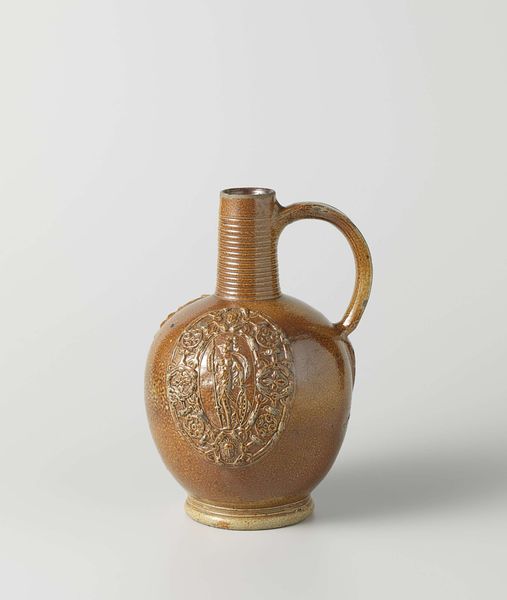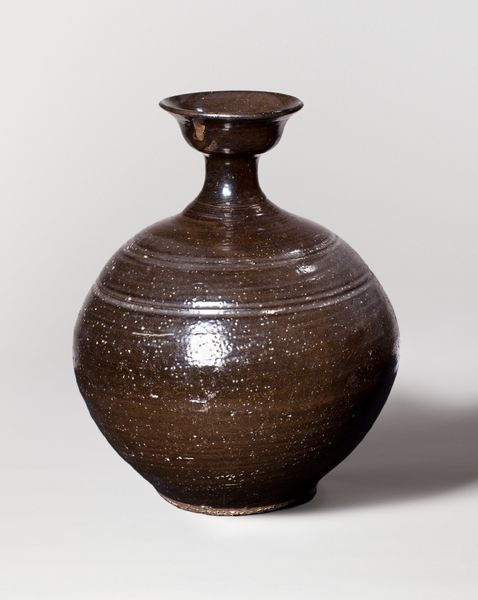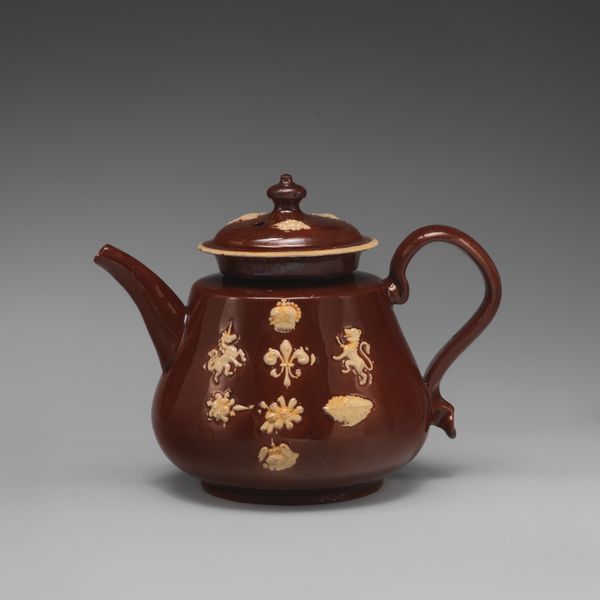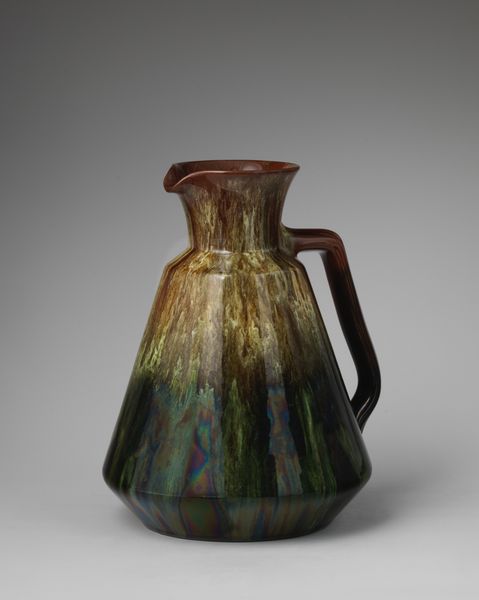
ceramic, earthenware
#
art-nouveau
#
ceramic
#
earthenware
#
geometric
#
decorative-art
Dimensions: height 24.5 cm, diameter 21.3 cm
Copyright: Rijks Museum: Open Domain
Editor: Here we have a vase made around 1900 by Chris van der Hoef, made of earthenware, currently held at the Rijksmuseum. The vase is bulbous with geometric patterns and it looks quite functional. What is your perspective on this piece? Curator: Looking at van der Hoef's earthenware vase through a materialist lens reveals much about the era’s production and consumption practices. Note the careful construction; it elevates a common material into a display of skilled labor. Consider, what does this tell us about the status of ceramics as art versus craft around 1900? Editor: I guess that at that time art nouveau blurs those traditional separations? Curator: Exactly. This piece challenges the established hierarchies. The geometric decoration, while aesthetically pleasing, speaks to industrial influences seeping into decorative arts. It suggests a democratisation of design, making it accessible for mass production, changing the role of artisans. Editor: It's fascinating how a simple vase embodies such significant shifts in art and society. It seems like more than decoration, it's like it shows new techniques and a new market developing at the time. Curator: Precisely! By examining its material, process, and cultural context, we understand art’s profound connection to societal forces and labor, highlighting art-nouveau's role in redefining those relationships. What do you take away from that? Editor: This has highlighted that the method and material used has a role in society. Thank you for clarifying the social context of the vase.
Comments
No comments
Be the first to comment and join the conversation on the ultimate creative platform.
